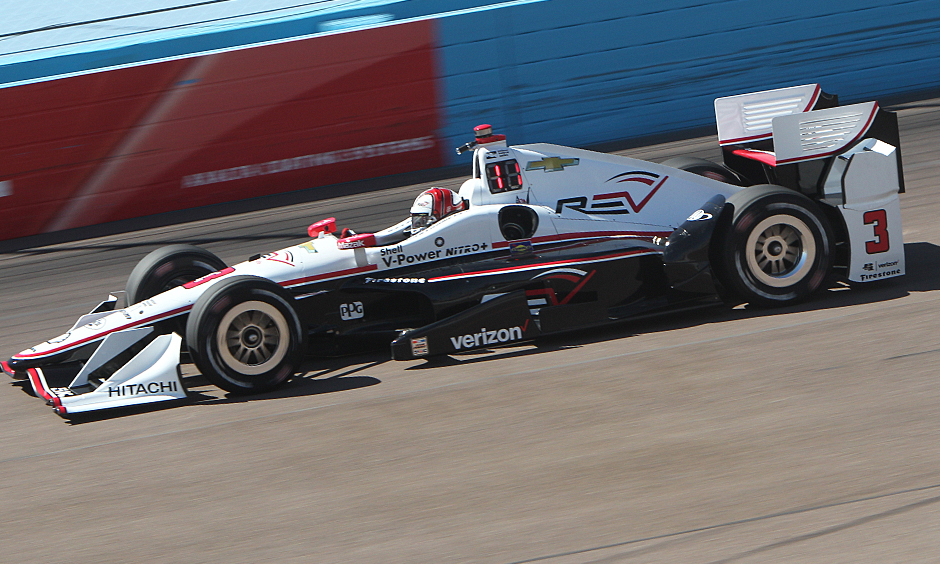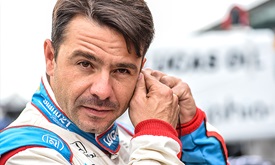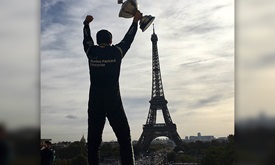Phoenix testing focuses on proper tire, aero setup for 2017 race
OCT 20, 2016
Following a successful return to the iconic Phoenix International Raceway during the 2016 Verizon IndyCar Series season, five driver/car combinations tested Tuesday on the mile oval in Avondale, Ariz., in an effort to make the 2017 race even more exciting.
Marco Andretti (Andretti Autosport), Ed Carpenter (Ed Carpenter Racing) and Helio Castroneves (Team Penske) participated in tire testing at the request of Firestone, the exclusive supplier to the Verizon IndyCar Series. In addition, Andretti Autosport teammates Ryan Hunter-Reay and Carlos Munoz tested different setups for INDYCAR to help determine the final aerodynamic regulations when the full field returns for the April 29 race.
Following an 11-year absence, INDYCAR returned to the oval in the desert this past season, where 61 previous races had been run between 1964 and 2005. Scott Dixon led 155 of the 250 laps to secure the victory. The purpose of Tuesday’s test was to develop a tire and aero package that promotes closer racing and more passing opportunities for the 2017 event.
“Our first year back at PIR was great,” said Hunter-Reay, driver of the No. 28 DHL Honda. “INDYCAR was made for this place. I think we’re going to put on a better show when we come back because we’re looking at how the race went, the rhythm of it, the amount of passing and we’re going to improve on that this year.”
Speeds were sizzling at this year’s Desert Diamond West Valley Phoenix Grand Prix. Castroneves shattered the track record in qualifying with two laps at more than 192 mph, while Dixon won the race with a record average speed of 139.822 mph. The pace of the race took some by surprise, so testing now for the 2017 event was even more important.
“Last year when we tested here, we weren’t going near as fast as we ended up going in the race and that kind of ended up throwing some curveballs to Firestone for the tires,” explained Carpenter, driver of the No. 20 Fuzzy’s Vodka Chevrolet. “So now that we are running more representative speeds and loads in the cars, we are just refining that tire and make it safer for us and better racing. You saw a couple of people having tire issues in the race last year and that’s something that doesn’t happen with Firestone and we want to keep it that way.”
While computer simulations and indoor testing are great, there’s nothing like testing on the actual racetrack, according to Cara Adams, chief engineer for Bridgestone Americas Motorsports and the manager of race tire development for Firestone Racing.
“We get a lot of great feedback during the race weekend, but during a typical race weekend we wouldn’t have time to look at changes for next year,” Adams said. “We would have to do our best with indoor testing and all of our analyses, so if we wanted to come back and make a change, it’s something that you need to be at the actual racetrack and testing in a very scientific test order. So you need to make sure you have control tires and then you need to make sure you test the changes in an appropriate manner.”
Castroneves, the 2002 PIR race winner, said he values any opportunity to test at a track.
“Testing sessions are always important for any driver because the car changes a little bit, the engineers come up with something during the off-season and they want to make sure that whatever they work on in the shop, when they put it in the race car, it works the same way,” the driver of the No 3 Team Penske Chevy said. “So that is extremely important so that you have a good performance during the season.”
The Phoenix race will be the fourth on the 17-race Verizon IndyCar Series schedule in 2017. Visit phoenixraceway.com for ticket information.



















